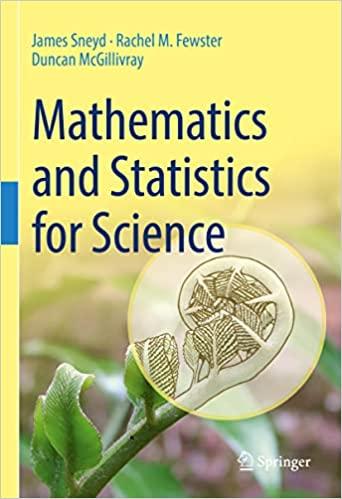In Exercise 29.10, we saw a model for children missing school. Independently for each child in the
Question:
In Exercise 29.10, we saw a model for children missing school.
Independently for each child in the school, and for each day,
• if a child is present today, they will be newly absent tomorrow with probability a;
• if a child is absent today, they will be recovered and returned tomorrow with probability r.
This convergence to a steady probability distribution happens because the model is a Markov chain.
It turns out that after this process has been running for a long time, the probability that a child is present on any particular day converges to a value p that doesn’t change any more over time. That is, for a particular child called Harry, the probability is p that Harry will be present at school a year from today; and it’s the same probability p that he will be present a year from tomorrow.
Working from the assumption that there is a probability p that satisfies this condition, show that it must be true that p = r r + a .
Does this match with the formula given in Exercise 29.10?
Step by Step Answer:

Mathematics And Statistics For Science
ISBN: 9783031053177
1st Edition
Authors: James Sneyd, Rachel M. Fewster, Duncan McGillivray






